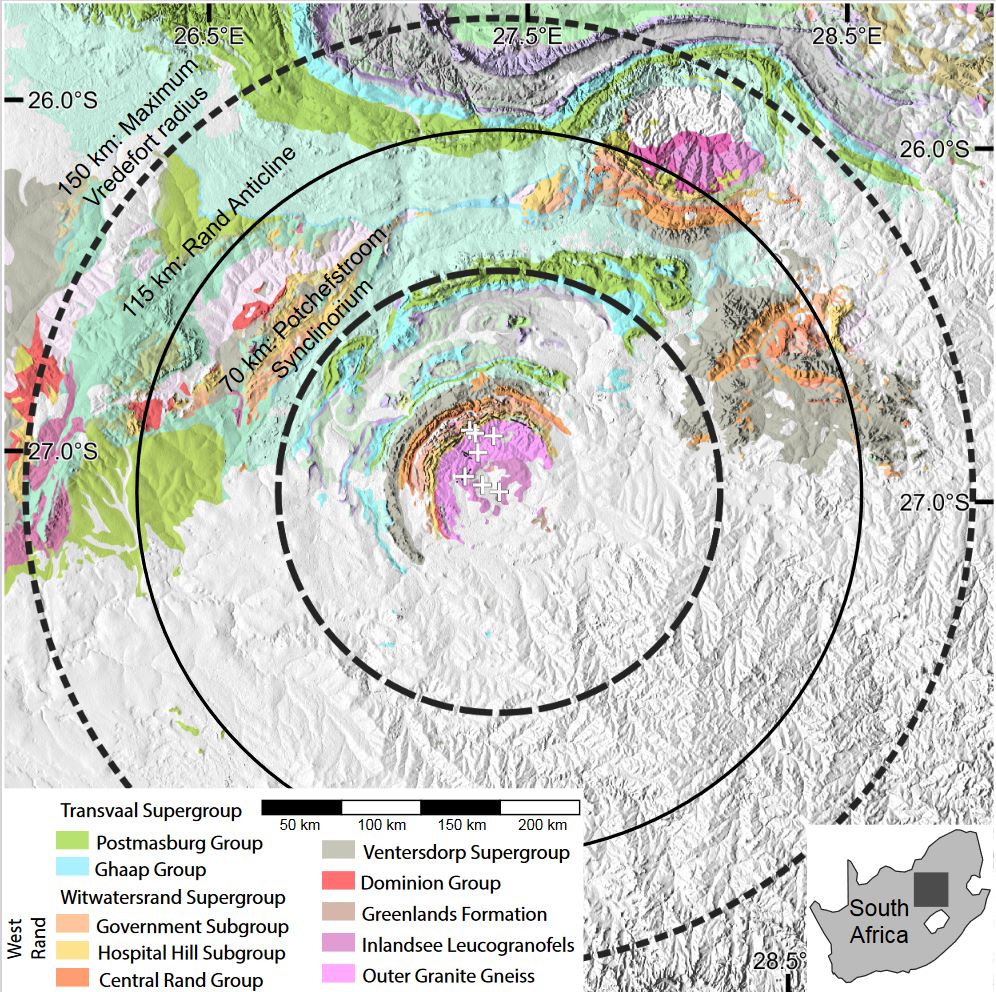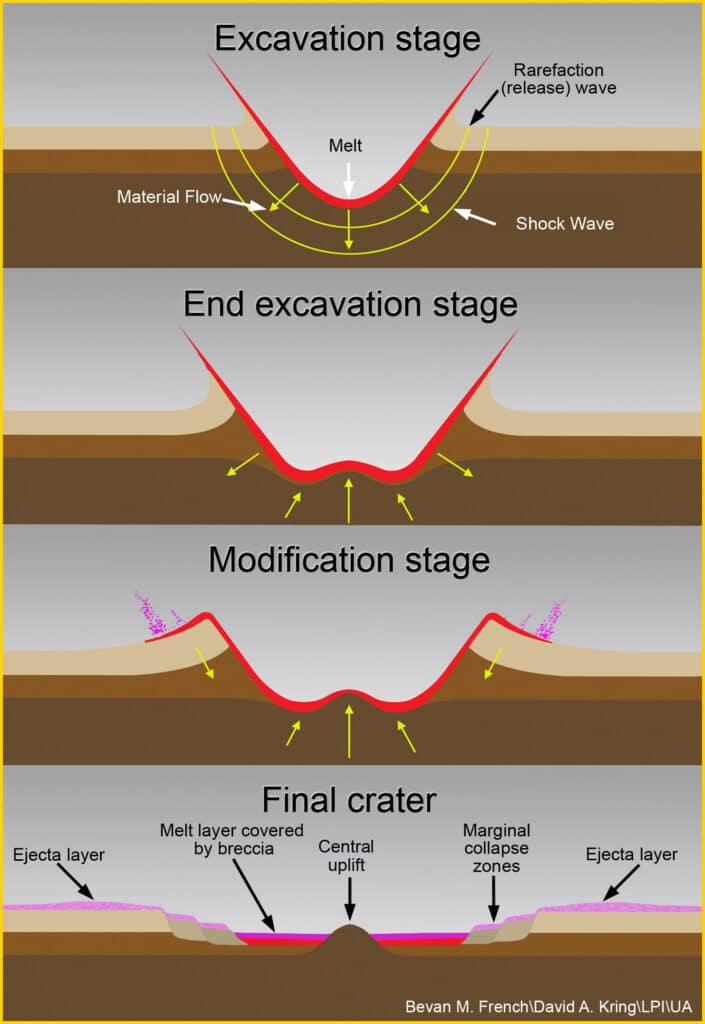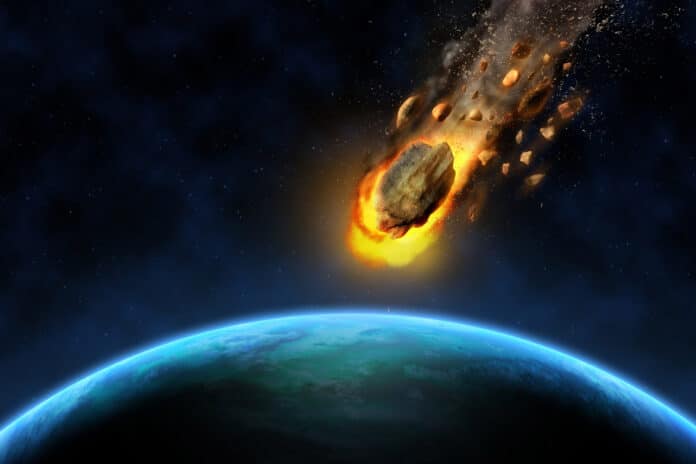We have only discovered impact craters that are less than half the age of the Earth and younger, despite the fact that meteorite impacts should have happened during the Earth’s 4.5 billion-year history. The oldest craters on Earth may provide vital details on the early Earth’s structure and the makeup of solar system bodies. They may also aid in the interpretation of crater records on other planets.
To understand how to find very old impact craters, geologists studied the largest of the oldest preserved impact craters in a new study. Geologists have discovered impact relics such as molten rocks, high-pressure minerals, and ejecta (stuff ejected far from the impact). These relics date back more than 3.5 billion years and are proof of impact.
However, the exact craters from that time period have yet to be discovered. Scientists refer to these enormous craters as impact structures and estimate their age to be only 2 billion years old. Mega-craters dating back 2.5 billion years are absent from our knowledge.
Matthew S. Huber, a planetary scientist at the University of the Western Cape in South Africa, said, “The steady tick of time and the relentless process of erosion are responsible for the gap.”
“It’s almost a fluke that the old structures we do have are preserved at all. There are a lot of questions we’d be able to answer if we had those older craters. But that’s the normal story in geology. We have to make a story out of what’s available.”

Geophysical methods, like seismic imaging or gravity mapping, can sometimes help geologists locate buried, hidden craters. Once they have found probable impact structures, they can look for physical evidence of the impact process, like ejecta and impact minerals, to prove their existence.
The key question for Huber and his team was how much of a crater can be eroded before the final geophysical remnants vanish. According to geophysicists, even the largest impact structures may be destroyed by 10 kilometers (6.2 miles) of vertical erosion. Still, this hypothesis has never been put to the test in the real world.
The Vredefort crater in South Africa is one of the planet’s oldest impact sites. Therefore, the scientists looked there to find out. About 2 billion years ago, an impactor with a diameter of 20 kilometers (12.4 miles) slammed into the globe, creating the structure, which is about 300 kilometers (186 miles) across.
The intensity of the impactor’s strike caused the crust and mantle to rise where it collided, forming a permanent dome. Rock melted and created mineral transformations farther from the core, where ridges of rock protruded. Then, after two billion years, time took its course and eroded roughly 10 kilometers (6.2 miles) below the surface.
The structure’s center, a semicircle of low hills southwest of Johannesburg, and a few smaller, more obvious indications of impact are all visible today. Gravity maps show the bullseye created by the mantle uplift, but outside of the center, there is little geophysical evidence of the impact.
Huber said, “That pattern is one of the last geophysical signatures that is still detectable, and that only happens for the largest-scale impact structures. Because only the deepest layers of the structure remain, the other geophysical traces have disappeared.”
“But that’s okay because Huber wanted to know just how reliable those deep layers are for recording ancient impacts from a mineralogical and geophysical perspective.”

“Erosion makes these structures disappear from the top down,” Huber said. “So we went from the bottom up.”
To identify changes in density, porosity, and mineralogy between affected and non-impacted rocks, the researchers sampled rock cores over a 22 km (13.7 mi) transect and examined their physical characteristics. They also compared their findings to those from their sample data by simulating the impact event and its impacts on rock and mineral physics.
What they discovered could have been more encouraging for hunting the planet’s oldest craters. When seen through a geophysical lens, the rocks in the outer ridges of the Vredefort structure were virtually indistinguishable from the nearby non-impact rocks. Still, some impact melt, and minerals remained.
Huber said, “That was not exactly the result we were expecting. The difference, where there was any, was incredibly muted. It took us a while to make sense of the data. Ten kilometers of erosion and all the geophysical evidence of the impact disappear, even with the largest craters,” confirming what geophysicists had estimated previously.”
“The researchers caught Vredefort just in time; if much more erosion occurs, the impact structure will be gone. The odds of finding buried impact structures from over 2 billion years ago are low.”
“To have an Archean impact crater preserved until today, it must have experienced unusual preservation conditions. But then, Earth is full of unusual conditions. So maybe there’s something unexpected somewhere, so we keep looking.”
Journal Reference:
- M. S. Huber, E. Kovaleva et al. Can Archean Impact Structures Be Discovered? A Case Study From Earth’s Largest, Most Deeply Eroded Impact Structure. JGR Planets. DOI: 10.1029/2022JE007721
